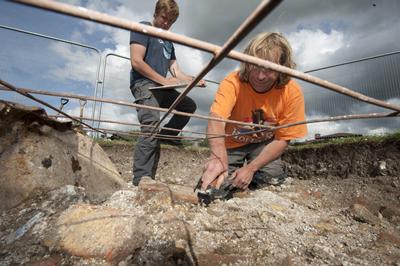Global nature of Archaeology at Southampton leads to top 50 world ranking

The global nature of Southampton’s research and reputation in Archaeology is reflected in its top 50 world ranking, according to Professor Alistair Pike, the University’s Head of Archaeology.
In the latest QS World University Rankings by Subject, Southampton has risen four places to 44th overall.
"It is fantastic news to hear we have improved our QS ranking, and remain in the top 50,” said Professor Pike. “Our international reputation stems from the global outlook of our staff who run research projects ranging from understanding the first human arrival in Australasia through to tracking the spread of leprosy in Medieval Europe."
In recent years, Southampton Professor Jon Adams has led The Black Sea Maritime Archaeology Project - one of the largest projects of its kind ever undertaken - which this year was awarded the Khaled al-Asaad International Discovery Award for their location and recording of a well preserved 2,400 year old shipwreck off the Bulgarian coast.
The c£12M project was previously judged by the Bulgarian National Institute of Archaeology with Museum as as the most significant archaeological project that year. The Bulgarian Government has recognised the project’s significant contribution to the understanding and protection of underwater Cultural Heritage and in 2017 the Prime Minister of the country bestowed special awards on team members. Professor Adams, as Chief Scientist, was awarded the Gold Star, first grade.
The team’s research on an unusual burial pit from the deserted Medieval village of Wharram Percy in 2017 was recently named as one of Historic England’s top ten discoveries of the decade (2010-2019). And archaeological divers, led by Rachel Bynoe, searching for submerged traces of the earliest hominin occupation of northern Europe in Happisburgh, Norfolk, achieved first place in the Duke of Cambridge Scuba Prize. This project incorporated academic research with the training of maritime archaeology students in scientific diving methods.
Just two years ago, in February 2018, a study led by Southampton and the Max Planck Institute for Evolutionary Anthropology found the first major evidence that Neanderthals made cave paintings, indicating they may have had an artistic sense similar to our own. The research showed that paintings in three caves in Spain were created more than 64,000 years ago – 20,000 years before modern humans arrived in Europe.